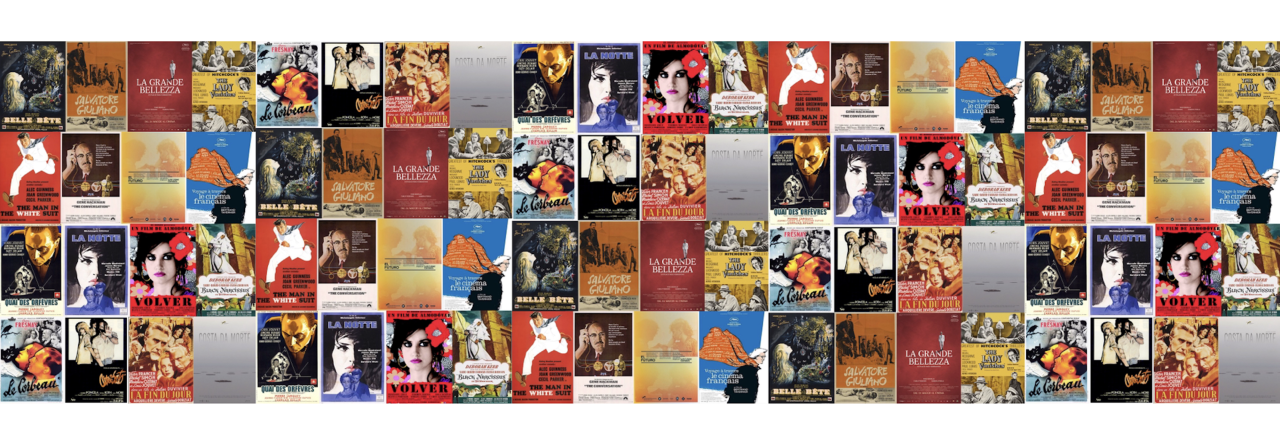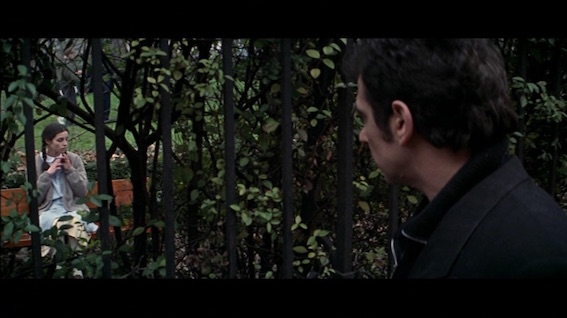
I originally wrote about Guerin’s Tren de sombras / Train of Shadows on the old blog in February 2014 (Update, August 2017: where I have reprinted something here, I have decided to remove the contents of the original on the old blog and instead leave a link there to the new site (it doesn’t make much sense to have the pieces appear in two places)). I am substantially revising that post for this entry in my Reprint series because I have partially rewatched the film this evening (I watched the opening 10 minutes or so and then the last 40 minutes) and subsequently reconsidered at least one element of my earlier piece.
I originally watched Guerin’s film because it had been mentioned multiple times in relation to El Futuro / The Future (Luis López Carrasco, 2013), in Spanish coverage at least, and having not seen the film I wasn’t sure what was being referenced. But it could also stand as a companion piece with Aita (José María de Orbe, 2010) – which I watched for the first time shortly before watching Tren de sombras – focusing as it does on a combination of (apparent) archival footage and a grand house. The connection to El Futuro is the recreation of an era, not simply representing the past but constructing a film that looks as if it was made in the era depicted. Guerin’s film is almost wordless and the only contextualisation for what we see are the opening intertitles explaining that in 1930, amateur filmmaker Gérard Fleury made a home movie in the grounds of his house, a film that would be his last as he died a few months later in mysterious circumstances while filming on a nearby lake. The intertitles also tell us that film had been in such a fragile condition that it was in no state be projected but that it has now been restored.
Back in 2014, I thought that I had misunderstood the French intertitles (there were no English subtitles on the format that I watched) precisely because I initially thought that they had managed to reassemble the 1930s family film when in actual fact Guerin recreated it (something that becomes apparent as the film progresses – so after a certain point I thought that I had confused ‘restored’ and ‘recreated’). As it happens, my French was better than I thought and the opening intertitles are a deliberate piece of misdirection on Guerin’s part. Conceived when the centenary of cinema was approaching, Tren de sombras was a manifestation of Guerin’s desire to explore the origins of filmmaking and a kind of cinematic immersion. The film’s title is a reference to a line from Maxim Gorky’s essay ‘The Kingdom of Shadows’ about his experience of watching moving pictures (by the Lumière brothers) for the first time in 1896 (there is an English translation of that text, here). It might be more accurate to say that Guerin created – as opposed to recreated (because I’m not sure that there is any Fleury family film other than the one shot by Guerin) – a realistic representation of 1930s filmmaking. It’s a testament to the quality of this reconstruction that it is perfectly believable as a 1930s film – indeed a number of reviewers have taken it at face value and refer to the film as making use of ‘found footage’.
The film opens with this 20 minute ‘home movie’, showing Fleury’s extended family at play in the grounds of their home and the surrounding countryside in the summer of 1930. We then switch to ‘the present’ and the nearby town (now in colour), before moving into the grounds of the Fleury home and then the house itself (the interior of which is not seen in the 1930s segment). It is at this point that Guerin’s film foreshadows aspects of Aita; although this house is evidently inhabited, the attention to textures, patterns, reflections – as well as the use of doorways and mirrors to frame our view and the ‘layering’ of the image (by which I mean that the depth of field alters, allowing us deeper into an image) – reminded me of the later film. This sequence is extraordinarily lush with rich colours and patterns in the interior of the house and verdant greenery outside – in conjunction with the music on the soundtrack, it put me in mind of the kind of magical otherness that I associate with Powell and Pressburger productions. The detailed layering and framing hints at what is yet to come, as Guerin and his camera turn detective and revisit the 1930s footage to peel away its layers and reveal secrets within.

In almost a cross between Antonioni’s Blow-Up (1966) and the kind of analysis that the Zapruder film has been subjected to, Guerin slows, replays, freeze frames, and enlarges different sequences of the film to follow the sightlines of those on camera. This gives new emphasis to the play of shadow and light at the back of the image and brings hidden connections and relationships to the surface. Guerin effectively plays with the language and form of cinema on the screen. The film is broken down to its constituent parts and then put back together with the grain of the image acting as a ‘witness’ to the supposed veracity of what we’re presented with, when in fact it is another layer of the show constructed by the director (the film was degraded by hand during the post-production and editing stages). The sequences that ‘reveal’ the most (shadows of simmering passions and traces of a possible love triangle) are then performed in front of us anew in colour, which is quite jarring. The use of colour in the recreation is the point at which the fakery seems apparent – I am slightly confused that those reviewers who take the 1930s footage as genuine don’t notice that it is the same actors (namely Juliette Gautier and Ivon Orvain) who appear in colour, although with some deliberately exaggerated elements of costume and make-up. In the colour section the camera moves between the different fields of view within the image, illustrating the layering of the image (and again demonstrating the importance of depth of field). As with Aita, at the end of the film I felt like I had just watched a magic show.

There is a French boxset (this one) containing Guerin’s Innisfree (1990), Tren de sombras, and Unos fotos en la cuidad de Sylvia / Some Photos in the City of Sylvia (2007) with optional English subtitles on all of the films.











